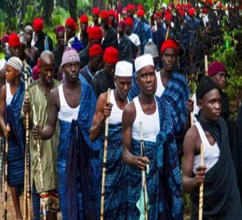Written by CorpsAfrica/Malawi Exchange Volunteer Mr. Daouda Faye
When I came to Malawi I was impressed by many things, especially the mini forests in the cemeteries. I wondered why there were so many trees in a cemetery. Inside is thick with vegetation. It was the first time I had seen anything like it. In some villages, cemeteries are practically jungles. At one point, an area with lots of trees was synonymous with a cemetery for me, and I was always right. I wanted to understand why cemeteries were like that. So I started asking people around me, particularly in Chiphazi and Nyundo (in central Malawi).
There were so many superstitions about the state of these cemeteries. Some people said that the trees protected the dead from the heat or that they represented them. In some villages, rules were laid down prohibiting the cutting of trees in cemeteries. If this was not respected, the person concerned would be fined, beaten, or accused of witchcraft. If someone wanted to visit a grave, they had to have the agreement of the village chief, who had to accompany them to request the deceased. All these explanations left me stunned. I had the impression that there was something else going on. In the end, the most acceptable explanation was that of my host father in Nyundo. According to him, it was just to protect the tombs from desecration. But whatever the reasons, they contribute to the sustainable protection of the environment.
The state of these cemeteries reminds me of the sacred natural sites that have cultural, social, and spiritual importance for the Diola populations of Casamance (southern Senegal). In Casamance, each village has its sacred forest which no one can enter unless they have been initiated. Initiation is handed down from generation to generation. It includes moral and physical tests and commits initiates to strictly respecting the laws of the sacred forest throughout their lives. There is no doubt that these practices explain why a third of Casamance is still covered in forest. The Diola people have a close relationship with nature, and certain elements are considered an integral part of their society. They play a vital role in maintaining natural resources and biodiversity in general and are therefore of ecological interest.
These strategies and beliefs show the extent to which communities conserve, protect, and safeguard the environment, sometimes without realizing it. In addition, they are passed down from generation to generation.
This enables them to cope for as long as possible with the anthropogenic threats to which they are exposed today. If only these superstitions and beliefs could be used around the world to mitigate environmental degradation.

